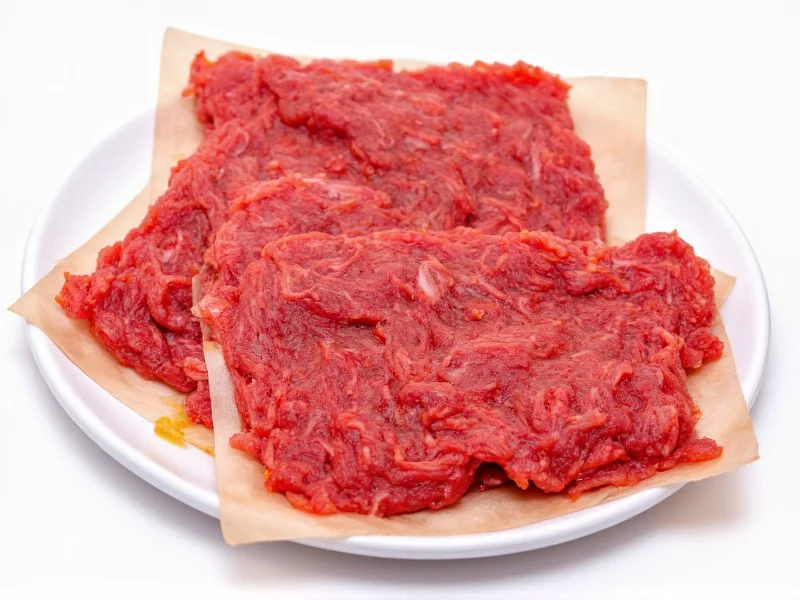Understanding what's inside a corned beef packet and how to use it properly makes all the difference between tender, flavorful results and disappointing outcomes. This guide covers everything you need to know about these convenient seasoning kits for perfect corned beef every time.
What's Actually in a Corned Beef Packet?
Commercial corned beef seasoning packets maintain consistency in flavor and preservation. While formulations vary by brand, most contain these core elements:
| Component | Purpose | Common Ingredients |
|---|---|---|
| Curing Agent | Preserves meat, prevents botulism, maintains pink color | Sodium nitrite (1-2%), Prague powder #1 |
| Base Salts | Extracts moisture, enhances flavor penetration | Coarse salt, kosher salt |
| Sweeteners | Balances saltiness, aids browning | Granulated sugar, brown sugar, molasses |
| Spice Blend | Creates signature flavor profile | Peppercorns, coriander seeds, mustard seeds, bay leaves |
How to Use a Corned Beef Packet Properly
Many home cooks make critical mistakes when using corned beef packets that compromise results. Follow these evidence-based steps for optimal preparation:
The Complete Cooking Process
- Rinse the brisket under cold water to remove excess surface salt
- Combine ingredients in a large pot: brisket, packet contents, and 4 quarts of water
- Bring to a gentle simmer (180-200°F) - never a rolling boil
- Cook covered for 3-4 hours until fork-tender (25-30 minutes per pound)
- Rest before slicing for 15-20 minutes to retain juices
- Slice against the grain for maximum tenderness
Cooking Method Comparison
Different cooking techniques yield varying results when using a corned beef packet:
| Method | Cooking Time | Texture Result | Flavor Development |
|---|---|---|---|
| Stovetop | 3-4 hours | Firm yet tender | Excellent spice penetration |
| Slow Cooker | 8-10 hours on low | Extremely tender | Milder flavor profile |
| Oven | 2.5-3.5 hours at 325°F | Firm texture | Richer, concentrated flavor |
| Instant Pot | 85 minutes + release time | Very tender | Less spice absorption |
Common Mistakes to Avoid with Corned Beef Packets
Even experienced cooks make these critical errors when preparing corned beef:
- Boiling instead of simmering - high heat makes meat tough and stringy
- Skipping the rinse - excess salt creates overly salty results
- Adding vegetables too early - root vegetables become mushy (add after 2 hours)
- Slicing with the grain - creates chewy, difficult-to-eat portions
- Using the entire packet with store-bought pre-cured brisket - creates dangerously high sodium levels
Storage and Shelf Life Information
Understanding proper storage prevents waste and ensures food safety:
- Unopened packets maintain quality for 18-24 months in a cool, dry pantry
- Once opened, transfer unused portions to an airtight container (6 months shelf life)
- Refrigerate cooked corned beef within 2 hours (3-4 day refrigerator life)
- Freeze cooked portions for up to 3 months with minimal quality loss
Homemade Alternatives to Commercial Packets
Creating your own corned beef seasoning blend offers customization options. For a standard 3-4 pound brisket, combine:
- 1½ tablespoons coarse salt
- 1 tablespoon sugar
- 1 teaspoon pink curing salt (Prague powder #1)
- 1 tablespoon whole black peppercorns
- 1 tablespoon coriander seeds
- 4 whole cloves
- 2 bay leaves, crumbled
- ½ teaspoon allspice berries
Toast the whole spices in a dry pan for 2 minutes before grinding for enhanced flavor. This homemade corned beef spice mix alternative lets you control sodium levels and customize flavors to your preference.
Nutritional Considerations
Corned beef prepared with seasoning packets contains significant sodium due to the curing process. A 3-ounce serving typically contains:
- 210-250 calories
- 1,200-1,800 mg sodium (50-75% of daily recommended limit)
- 18-22g protein
- 12-15g fat
Rinsing the cooked beef under cold water can reduce surface sodium by up to 30%. For those monitoring sodium intake, look for corned beef packet without nitrates options or create a low-sodium homemade blend using reduced-salt curing alternatives.
Frequently Asked Questions
Can I use a corned beef packet for other meats besides brisket?
Yes, corned beef seasoning works well with other tough cuts like rump roast, bottom round, or even pork shoulder. Adjust cooking times based on the meat's density and fat content for optimal tenderness.
How long should I cook corned beef with a seasoning packet?
Plan for 25-30 minutes per pound at a gentle simmer (180-200°F). A 3-4 pound brisket typically requires 3-4 hours. The meat is done when a fork inserts with no resistance and internal temperature reaches 190-205°F for optimal tenderness.
Do I need to add additional water when using a corned beef packet?
Yes, most packages require adding 4 quarts of water to properly dilute the curing salts and spices. Using insufficient liquid creates overly salty results and prevents proper flavor development during the extended cooking process.
Can I substitute a corned beef packet with individual spices?
Absolutely. For every pound of brisket, use 1 teaspoon coarse salt, ½ teaspoon sugar, ¼ teaspoon pink curing salt, and 1 teaspoon mixed whole spices (peppercorns, coriander, mustard seeds). This corned beef packet substitute gives you complete control over ingredients and flavor intensity.
Why does my corned beef turn out tough even with a seasoning packet?
Tough corned beef usually results from boiling instead of simmering, insufficient cooking time, or slicing with the grain. Maintain a gentle simmer (small bubbles barely breaking surface), cook until fork-tender (not just to a specific time), and always slice perpendicular to the muscle fibers for maximum tenderness.











 浙公网安备
33010002000092号
浙公网安备
33010002000092号 浙B2-20120091-4
浙B2-20120091-4